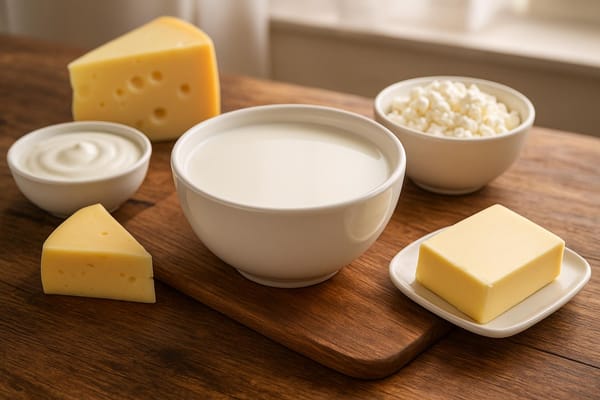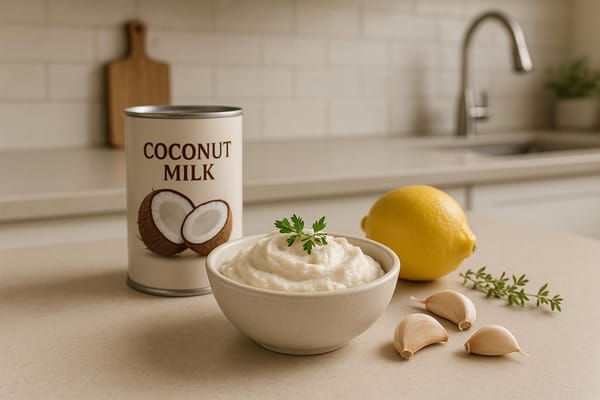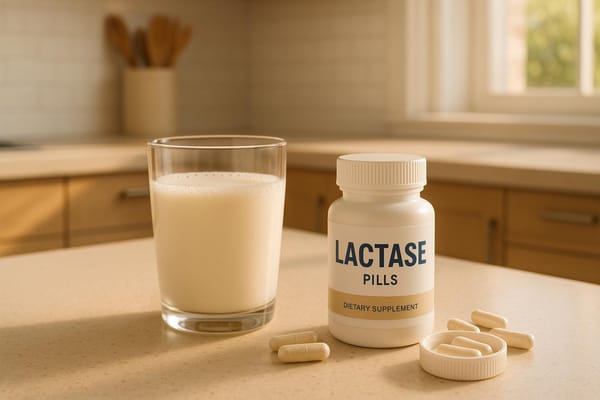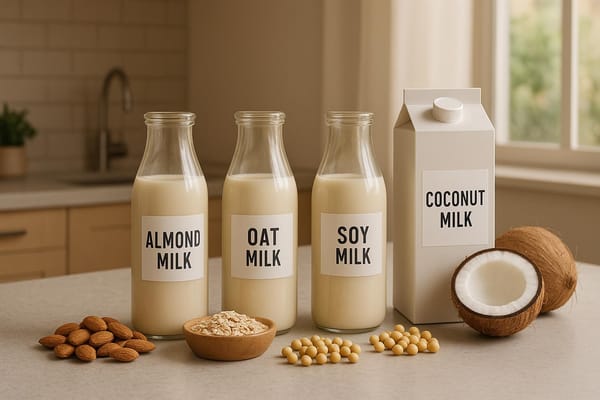How to Spot Dairy in Ingredient Lists
Learn how to identify hidden dairy ingredients in food labels, ensuring a safe and informed dairy-free lifestyle.
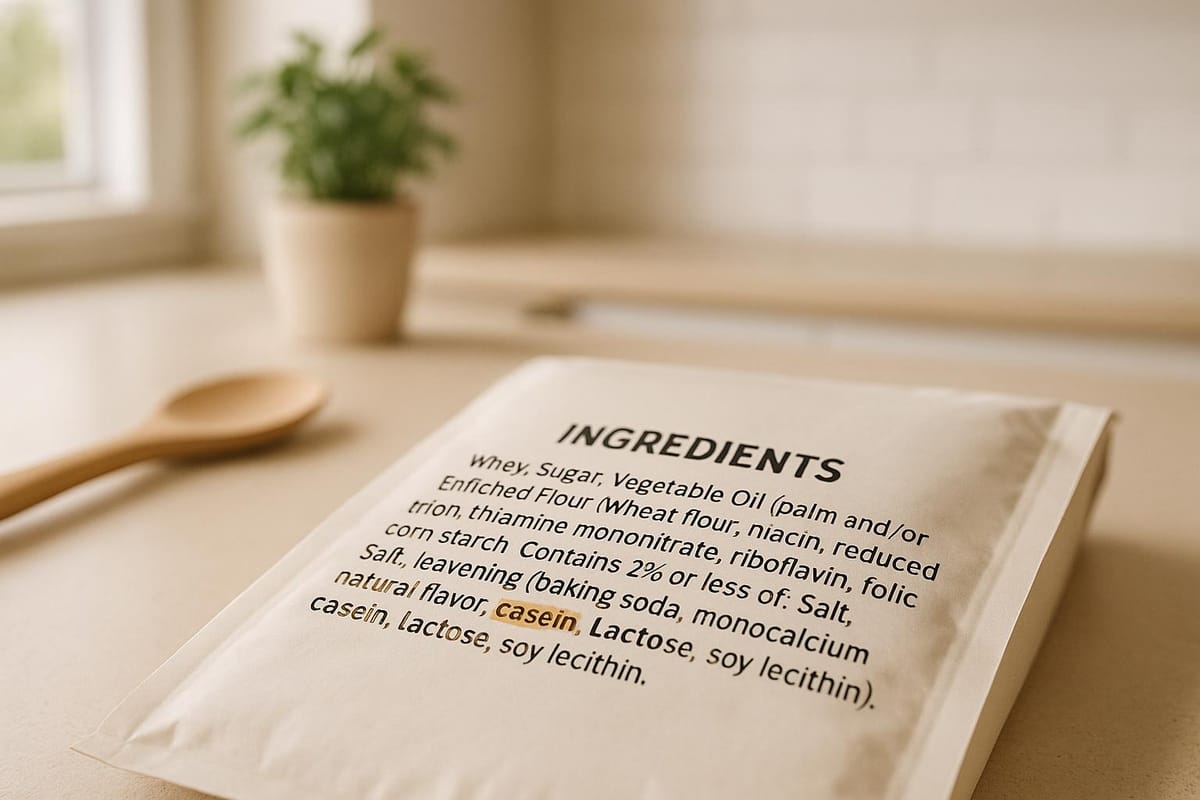
Dairy can hide in plain sight on ingredient labels. Whether you're managing lactose intolerance or a milk allergy, identifying dairy is crucial for your health. Here’s what you need to know:
- Key Dairy Terms: Look for obvious ones like milk, butter, cream, or cheese. Watch out for hidden names like whey, casein, lactose, and milk solids.
- U.S. Labeling Laws: Products must list milk as an allergen, either in a "Contains" statement (e.g., "Contains milk") or in parentheses after the ingredient (e.g., "whey (milk)").
- Surprising Sources: Dairy often sneaks into processed foods like breads, snacks, soups, salad dressings, and even medications.
- "Non-Dairy" Misleading Labels: Even "non-dairy" products may include milk-derived ingredients like casein.
- Check Labels Every Time: Recipes can change, so always review the ingredient list, even for familiar products.
Quick Tip: Keep a list of hidden dairy terms on your phone and verify unknown ingredients when in doubt. For accidental dairy exposure, lactase supplements like milktab can help manage symptoms.
Being informed and vigilant makes navigating a dairy-free lifestyle easier. Read labels carefully and stay proactive to avoid unwanted dairy.
How to find HIDDEN DAIRY in ingredients! | Not Only Carrots vegan FAQ
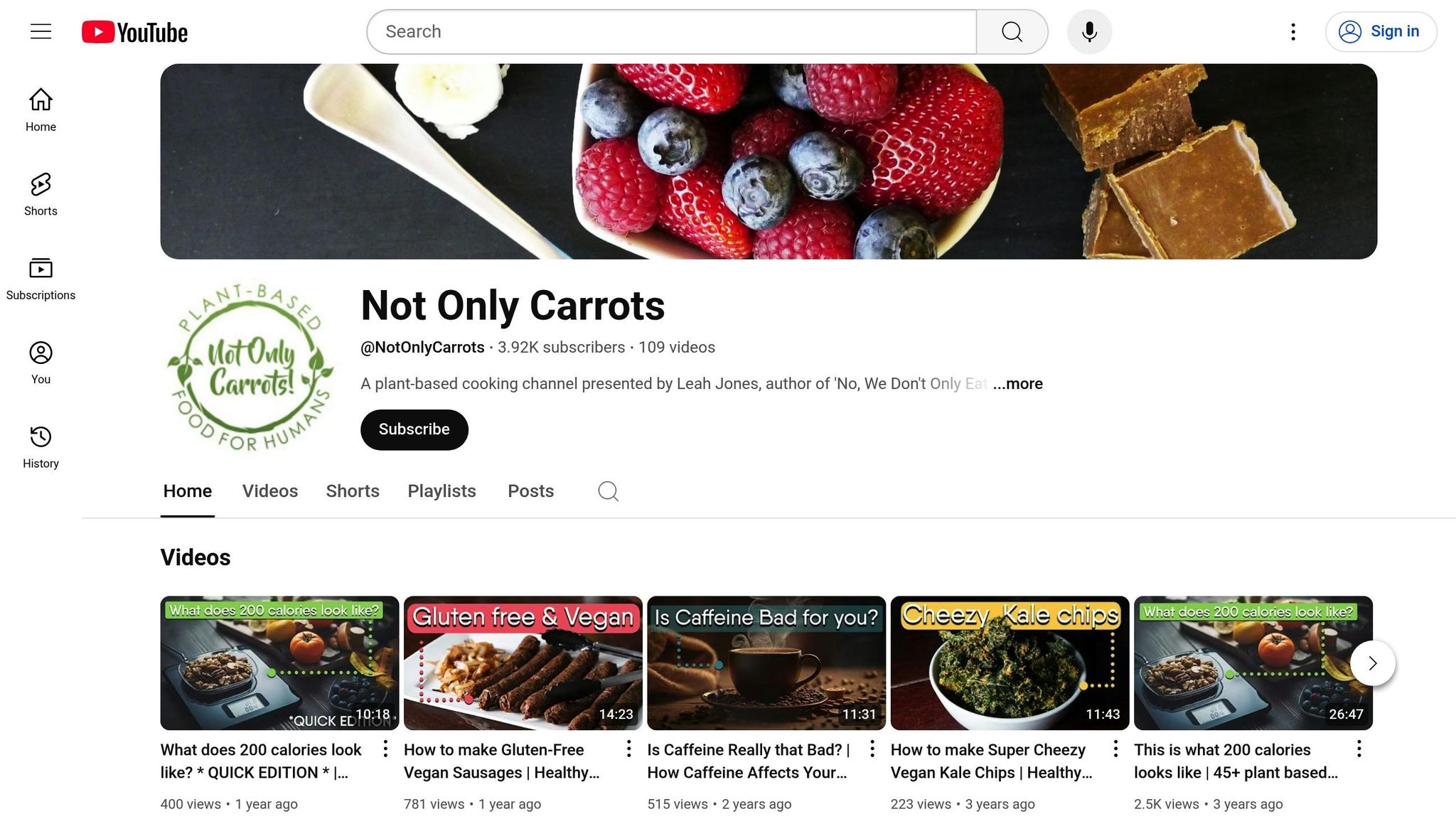
Common Dairy Ingredients and Their Other Names
Recognizing dairy ingredients isn't just about spotting the obvious. Many products use technical or less familiar terms that can make identifying dairy a bit tricky. Understanding these can help you make better choices while shopping.
Basic Dairy Ingredients
Some dairy ingredients are easy to spot because they’re labeled with familiar terms. For example, milk is often listed as whole, skim, nonfat, or evaporated. Similarly, butter, buttermilk, cream, and sour cream are clearly labeled as dairy.
Cheese varieties like cottage cheese, goat cheese, and sheep milk cheese are also straightforward. Other common dairy products like yogurt, kefir, and curds are typically listed by name. You’ll also frequently see whey or whey powder on labels, especially in processed foods like protein bars and baked goods.
Other terms that clearly indicate dairy include lactose (milk sugar), casein (milk protein), and milk solids. Products made with condensed milk, sweetened condensed milk, or malted milk are also unmistakably dairy. Even ghee, despite being clarified butter, is still a dairy product and must be labeled as such.
It’s worth noting that goat’s milk and sheep milk products are also considered dairy under U.S. labeling laws. These ingredients are usually listed clearly, helping you identify them without confusion.
Hidden Dairy Names
While some terms are obvious, others are more technical and less familiar. These can make it harder to identify dairy in processed foods. For example, sodium caseinate and calcium caseinate are derivatives of milk protein. They’re often found in products like coffee creamers, processed meats, and baked goods. People with milk allergies should be cautious of these, even though they might not affect those who are simply lactose intolerant.
Other milk proteins to watch for include lactalbumin, beta-lactoglobulin, and lactoglobulin. These are often used in processed foods and may not immediately appear to be dairy-related.
Hydrolyzed casein and milk protein are commonly used as flavor enhancers in processed foods. Similarly, whey protein concentrate and whey protein hydrolysate are popular in fitness products but can also show up in everyday items.
Some ingredients might seem unrelated to dairy but still are. For instance, lactoferrin is a milk protein, and rennet casein comes from milk processing. Even delactosed whey and demineralized whey, despite their processing, still contain milk proteins.
You should also be cautious of terms like "modified milk ingredients" and "natural butter flavor", as they indicate dairy content. Additionally, scientific-sounding names with "lact", "casein", or "whey" in them - like potassium caseinate, magnesium caseinate, or iron caseinate - are all derived from milk, regardless of the additional mineral in their name.
Finally, keep in mind that lactose-free products are still made from milk. These products have had the lactose removed or broken down, but they remain unsuitable for those with milk allergies. Always check labels carefully if you need to avoid dairy entirely.
Foods That Often Contain Hidden Dairy
Dairy can sneak into foods in ways you might not expect. Many processed items include dairy ingredients that aren't obvious from their names or packaging. Recognizing these hidden sources can help you make more informed choices, especially if you're avoiding dairy for dietary or health reasons.
Here’s a closer look at where dairy often hides in everyday foods.
Processed Foods with Dairy
Baked goods are a common hiding spot for dairy. Items like bread, muffins, pancakes, and biscuits often include milk, butter, or buttermilk to improve flavor and texture. Even seemingly simple options, like baguettes, might have milk or cheese added. Commercial bakeries frequently use dairy ingredients, so always check the ingredient labels.
Processed snacks are another culprit. Crackers, chips, and cookies may contain whey or casein, which are milk derivatives used to enhance flavor or texture. Even flavored potato chips, such as salt and vinegar or dill pickle, can include dairy in their seasoning blends.
"Since milk is one of the top allergens in the U.S., it has to be listed directly under the ingredients list if a product contains any dairy. So, don't forget to check that label!"
– Anna Taylor, Registered Dietitian, Cleveland Clinic
Salad dressings and sauces can be surprising sources of dairy. Creamy options like ranch or blue cheese are obvious, but even vinaigrettes can include hidden cheeses, like parmesan. Tomato-based pasta sauces might also sneak in milk for a richer flavor or smoother texture.
Canned soups often contain dairy, even when it’s not obvious. Cream-based soups clearly include milk, but some vegetable or tomato soups may also use whey or butter as ingredients to enhance their texture and taste.
Coffee creamers, even those labeled "non-dairy", can be misleading. Many still contain milk derivatives like casein, which can confuse consumers who need to strictly avoid dairy.
Protein bars and meal replacement shakes frequently use whey protein, a milk byproduct. While these are popular among fitness enthusiasts, they can be problematic for those avoiding dairy.
Processed meats sometimes include dairy fillers to improve texture. Sausages, hot dogs, and deli meats may feature these ingredients. Additionally, cross-contamination can occur when deli slicers are used for both meats and cheeses.
Other unexpected sources of dairy include canned tuna, where some brands add hydrolyzed caseinate for flavor, and instant potatoes, which often contain powdered milk or butter. Even medications can be a hidden source - about 20% of prescription drugs and 6% of over-the-counter medications use lactose as an ingredient. Surprisingly, some gum brands also include casein.
Spice blends, like taco seasoning or ranch mix, may use whey or milk powder for added flavor. Similarly, granola bars and cereal bars might include butter or whey powder, and gravy or bouillon products could use whey for texture - even in varieties marketed as "all-beef."
These examples highlight how dairy finds its way into a wide range of processed foods, making it essential to read labels carefully.
Why You Must Read Every Label
Dairy ingredients are used extensively in food manufacturing to enhance flavor, texture, shelf life, and binding properties. As a result, it’s easy to overlook their presence in products you wouldn’t expect.
The term "non-dairy" can be especially misleading. According to FDA regulations, products labeled "non-dairy" can still include milk derivatives like casein. This can pose issues for those with milk allergies or those adhering to strict dairy-free diets.
Cross-contamination is another factor to consider. Shared equipment in manufacturing facilities can lead to trace amounts of dairy in products that are otherwise dairy-free. Labels like "may contain milk" are often added to warn consumers about this possibility.
It’s also important to note that product recipes can change. A brand that was dairy-free last month might include dairy in a new formulation, so checking labels every time you shop is crucial.
When in doubt, look for products with certified vegan labels or clear "dairy-free" and "plant-based" markings. These offer more assurance than relying solely on "non-dairy" claims. If you're still uncertain, reaching out to manufacturers directly can provide clarity.
How to Read Ingredient Labels Step by Step
Here’s a straightforward guide to help you identify dairy ingredients on food labels and make informed decisions.
Check the Allergen Statement First
Start with the allergen statement - it’s your quickest way to spot hidden dairy. This section is usually located right after or near the ingredient list and will use clear phrasing like "Contains: milk" or "Contains: milk, eggs, wheat." Thanks to the Food Allergen Labeling and Consumer Protection Act of 2004 (FALCPA), manufacturers are required to clearly list all major food allergens, including milk, on their labels.
The U.S. recognizes nine major allergens, with milk being one of them. These allergens account for about 90% of food allergy reactions.
"So, if a 'Contains' statement has your allergen listed, put the food product back on the shelf." - Carol D'Lima, food technologist with the Office of Nutrition and Food Labeling at the U.S. Food and Drug Administration
If the label says "Contains: milk," you can immediately rule out that product. However, not all items will have this statement. If the ingredient itself (like buttermilk) makes the allergen obvious, a separate declaration might not appear. Milk is also the leading cause of recalls due to undeclared allergens.
Once you’ve checked this, move on to the ingredient list to uncover less obvious dairy terms.
Look for Dairy Ingredients in the List
If there’s no "Contains" statement or you want to know the specific dairy ingredients, carefully read through the ingredient list. Ingredients are listed by weight, so those at the top are present in larger amounts.
"If you see its name even once, it's back to the shelf for that food product too." - Carol D'Lima, food technologist with the Office of Nutrition and Food Labeling at the U.S. Food and Drug Administration
Keep an eye out for clear dairy terms like milk, butter, cheese, cream, yogurt, as well as less obvious ones like whey, casein, lactose, or milk powder. These can appear under various names, so thoroughness is key.
If you’re unsure about an ingredient, it’s time to dig deeper.
Research Unknown Ingredients
When you come across an unfamiliar ingredient, take the time to verify whether it contains dairy. If something doesn’t look familiar, it’s better to err on the side of caution. The FDA suggests reaching out to the manufacturer or distributor listed on the product label for clarification.
"If you're unsure about whether a food product contains any ingredient to which you are sensitive, don't buy it, or check with the manufacturer or distributor listed on the food product's label first to ask what it contains." - Carol D'Lima, food technologist with the Office of Nutrition and Food Labeling at the U.S. Food and Drug Administration
If you’re still uncertain, it’s best to avoid the product altogether or contact the company for more details. Their contact information is typically listed on the label.
Beginner Tips and Helpful Tools
Starting your dairy-free journey can feel overwhelming, but with the right strategies and tools, you'll quickly get the hang of it. Here are some practical tips to make grocery shopping and managing your dietary needs a smoother experience.
Simple Tips for Dairy-Free Shopping
Keep a list of dairy ingredients handy. Save a reference list of common dairy-based ingredients, like casein or whey protein concentrate, on your phone. This makes label-checking a breeze and helps you avoid hidden sources of dairy.
Be cautious with "non-dairy" labels. Just because a product says "non-dairy" doesn’t mean it’s completely free of milk derivatives. For example, casein may still be present, so always double-check the ingredient list.
Use dietary claims as a starting point. Labels like "dairy-free", "milk-free", "vegan", or "Kosher Pareve/Parve" can guide you, but don’t stop there - review the full ingredient list to confirm.
Check the top three ingredients. These are the main components of the product. If dairy shows up here, it’s likely a significant part of the food.
Keep track of problem foods. If a product causes symptoms, jot it down. Over time, you’ll build a personalized avoidance list that makes shopping easier.
As Alisa Fleming, founder of GoDairyFree.org, puts it:
"Once you have the tools, a dairy-free lifestyle is far from difficult. Consumer demand is growing, and suppliers are responding with hundreds of new specialty foods each year. The key is identifying these products, knowing the retailers, and creating healthy meals."
If you still struggle with occasional dairy discomfort, there’s another option to consider.
Using Lactase Supplements Like milktab
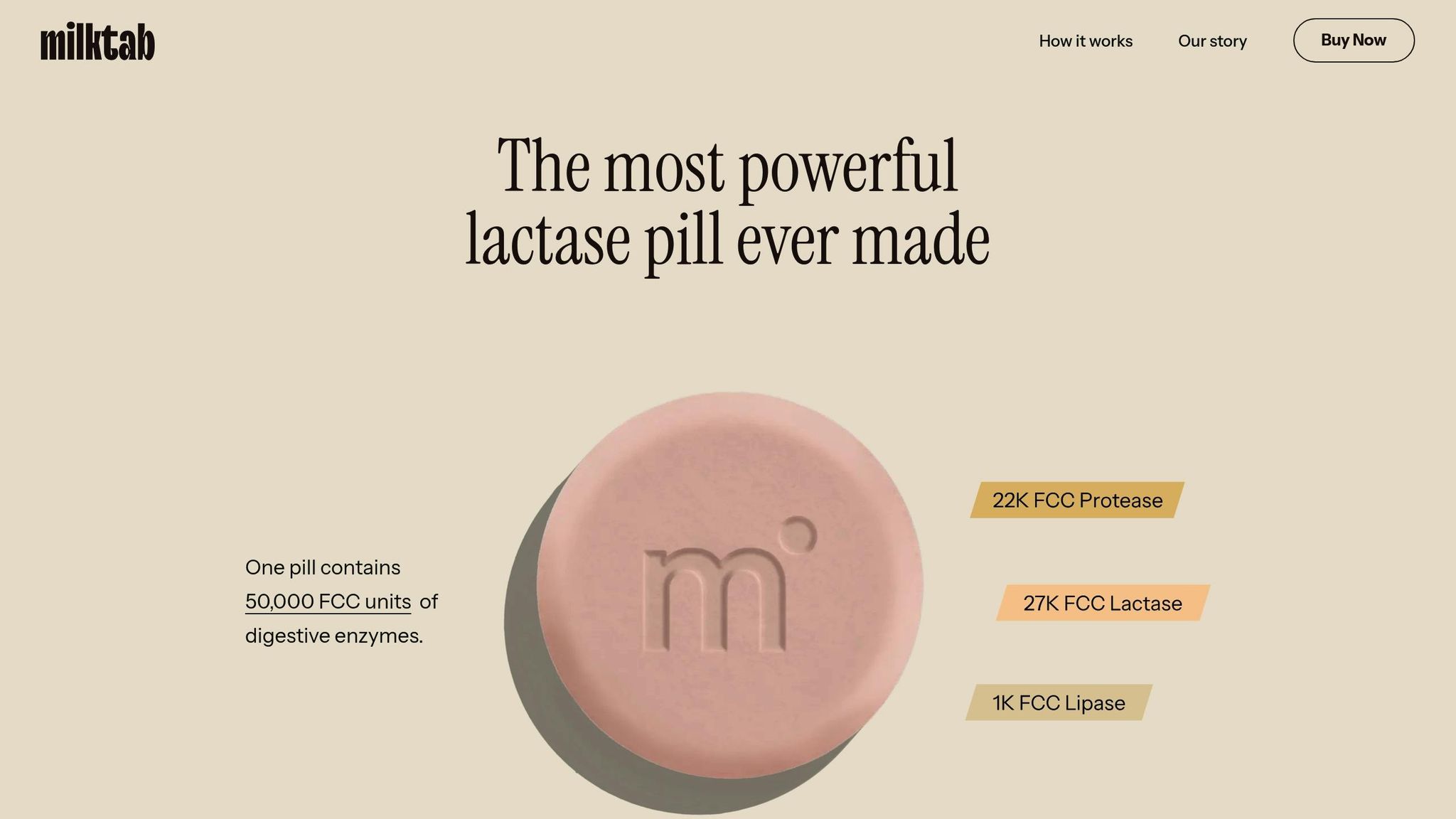
Sometimes, even careful planning isn’t enough, and that’s where lactase supplements come in. These supplements help your body break down lactose, making it easier to digest dairy without the unpleasant side effects.
One standout option is milktab, a powerful lactase supplement designed to tackle dairy digestion issues. Each pill contains 27,000 FCC units of lactase, along with 22,000 FCC units of protease and 1,000 FCC units of lipase to help break down lactose, milk proteins, and fats. The pills are vegan, non-GMO, FODMAP-free, and third-party tested, making them a reliable choice.
Milktab comes in a compact package, perfect for dining out or traveling. A box of 45 pills costs $29, with discounts available when you buy multiple boxes - 10% off for two boxes and 20% off for three.
Key Points to Remember
Navigating a dairy-free lifestyle requires a mix of diligence and preparation, with label reading being your most essential tool. Every time you shop, make it a habit to carefully review ingredient labels - recipes can change, so even familiar products should be checked regularly.
Start by looking at the allergen statement. Thanks to U.S. labeling laws under the Food Allergen Labeling and Consumer Protection Act (FALCPA), any product containing milk must clearly state it - either within the ingredient list or in a "Contains: milk" statement. While this provides a quick way to spot milk, staying alert for less obvious ingredients is still crucial.
Learn to identify hidden dairy terms like casein, whey, lactalbumin, and ghee. Keeping a reference list handy can make these checks faster and more effective. Be especially cautious with processed foods - items like bread, crackers, processed meats, salad dressings, and margarines are common culprits for sneaky dairy ingredients. The more processed the food, the higher the chance it might contain hidden dairy.
If you’re unsure about an ingredient, take the time to research it or reach out to the manufacturer. When in doubt, it’s safer to skip the product altogether rather than risk unintended exposure.
For those moments when accidental dairy consumption happens, lactase supplements such as milktab can be a helpful backup. With 27,000 FCC units of lactase and additional enzymes to break down milk proteins and fats, milktab can ease discomfort, especially when dining out or traveling.
It’s worth noting that milk allergies affect about 1 in 50 children and a smaller percentage of adults. With consistent label reading and a few reliable tools, living dairy-free can quickly become second nature.
FAQs
What’s the difference between lactose intolerance and a milk allergy when reading ingredient labels?
Lactose intolerance occurs when the body doesn’t make enough lactase, the enzyme responsible for breaking down lactose - the sugar found in milk. This can lead to uncomfortable digestive symptoms like bloating, gas, and diarrhea. In contrast, a milk allergy is an immune system reaction to milk proteins, which can trigger more severe symptoms such as hives, swelling, or even trouble breathing.
When checking ingredient labels, lactose intolerance means you should watch for milk sugars, while a milk allergy requires steering clear of all milk proteins. Be on the lookout for terms like "milk", "whey", "casein", or "butter", as these indicate the presence of dairy.
How can I identify hidden dairy ingredients in food labels?
To identify hidden dairy in food labels, start by closely examining the ingredient list for terms like whey, casein, caseinate, or milk derivatives. These ingredients might not always be obvious, so it's important to read carefully. Additionally, check for allergen statements such as "contains milk" or "may contain milk", which are usually listed near the ingredients.
Dairy can often sneak into foods you wouldn't expect, like canned tuna, baked goods, or processed snacks. Getting familiar with dairy-related terms and double-checking labels can save you from surprises. For those who are lactose intolerant but still want to enjoy dairy, Milktab offers an easy solution with its lactase pills, specially designed to support digestion.
How can I be sure a 'non-dairy' product is safe if I have a milk allergy?
Even if a product is labeled as non-dairy, it might still include milk proteins such as casein or whey, which can cause allergic reactions. It’s crucial to read the ingredient list thoroughly and watch for terms like milk, whey, casein, or other milk-based derivatives. Also, be aware that some non-dairy products might be made in facilities that process milk, which could result in trace contamination.
For extra reassurance, consider discussing allergy testing or other safety measures with your healthcare provider. If you’re lactose intolerant rather than allergic, a product like milktab can help by breaking down lactose, allowing you to enjoy dairy without discomfort.
